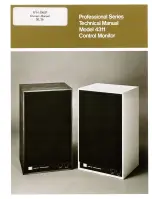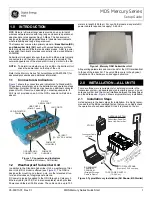
Series PC Manual V 1.0 - Rev. 3
– 03/01/01
DS Europe
27
13.1. MECHANICAL AND ELECTRICAL MEASURING FIELD COINCIDENCE:
The testing certificate is issued at the end of transducer manufacturing, following a
complete operating performance check up (using computer testing procedure).
Parameters and measurements reported are results of pre-calibration carried out to test
transducer operating performance.
Any additional settings, by the User, are limited to match the electrical analog outputs (or
digital) of the transducer (zero or full scale) with the limits of the mechanical stroke (initial
and end of stroke) of the machine. Transducers having the same measuring field can have
zero
or
full scale
signals slightly different for the tolerance of components and tolerance
during machining.
Important
: The settings during installation should only be done if considered to be really
necessary.
13.2. CALIBRATION WITH PUSH BUTTONS:
The transducer is factory pre-calibrated. Using built-in A and B push buttons, it can be
calibrated on the field (
reduced calibration,
only usable if transducer has D/A 1)
On the field, it is
only possible to calibrate the zero and full scale positions.
The result of the operation will be read by a tester positioned at output of D/A converter 1(
between
White
and Yellow wires ).
Calibrating operation always use
D/A
converter 1.
For convenience reasons, the cursor or float nearest to the electronics (red casing with
electrical output) is referred to as
cursor 0,
while the cursor or float positioned between the
Cursor 0 and the probe point will be referred to as
Cursor 1.
To get a better idea of the identification number and position of the cursors on the probe,
consult
figure 13
.
figure 13
: View of PCS transducer with calibration and cursors numbers
To gain access to push buttons A and B you need to open the cover (
figure 14
) doing the
following operations:
•
Unscrew the four screws as shown in
figure 14
;
•
Carefully remove the cover;
•
Individualise the two push buttons on the printed circuit (
figure 15
);
•
Calibrate as shown in sections.
•
Once you have done the calibration, carefully put the cover back on and tightly screw it
down making sure it is really well sealed.
Important
: during calibration phase, avoid:
•
Introducing or touching components with metal tools;
•
Using or inserting liquid of any kind whatsoever;













































